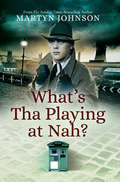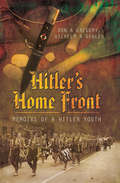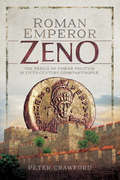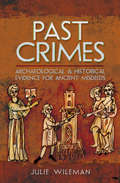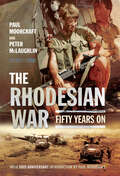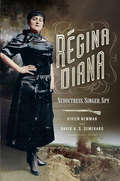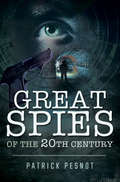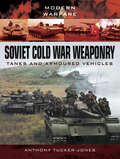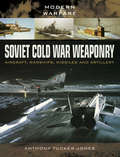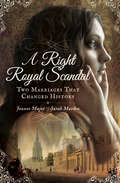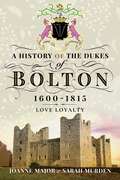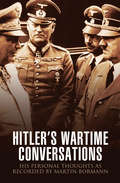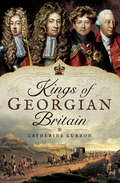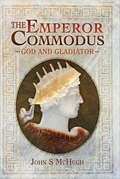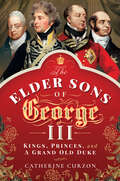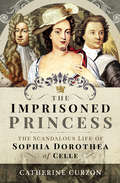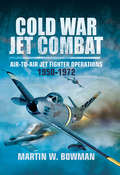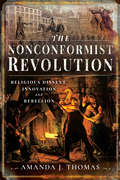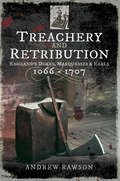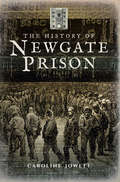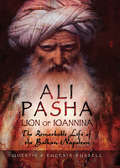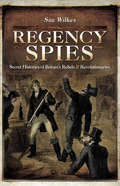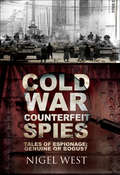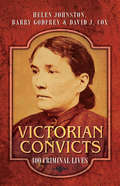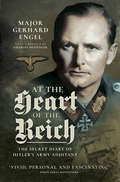- Table View
- List View
What's Tha Playing at Nah?
by Martyn JohnsonWelcome to What's Tha Playing At Nah?, the fourth volume of Martyn Johnson's acclaimed series of stories about policing during the 1960s and 1970s. Whether 'on the beat' or 'as CID', once again Martyn enthralls, surprises and shocks his readers with tales set in an almost forgotten era: a veritable Lost World of people, places and phrases in his beloved Sheffield. Steven Spielberg please note. Who will you meet on the journey? Well, there's the usual myriad of lovable characters, from Big Derek the doorman and Mr Dar the tailor to 'Caribbean-singing Henry' and cross-dressing 'Doreen'; and not forgetting Cecil the resident barman at 'Mucky Mary's'; Marlene the prostitute, and 'old Fred' the tramp. Among the less savoury are Mr Dirty Bastard, Mr Car Thief, Mr Money-grabber aka Nasty Pimp, Mr Sticky Fingers the burglar and Mr Nasty the rapist; and several 'perverts' of the worst kind. As usual, Martyn's down-to-earth honesty and humour shines through the pages; but he never loses sight of the human condition in all its forms: good, bad, sad and happy.
Hitler's Home Front: Memoirs of a Hitler Youth
by Don A Gregory Wilhelm R GehlenA &“candid and revealing memoir shows a normal boy and a family at war and in its aftermath, determined to do what it took to survive . . . fascinating&” (The Great War). When Adolf Hitler and the Nazi Party came into power in 1933, he promised the downtrodden, demoralized, and economically broken people of Germany a new beginning and a strong future. Millions flocked to his message, including a corps of young people called the Hitlerjugend—the Hitler Youth. By 1942 Hitler had transformed Germany into a juggernaut of war that swept over Europe and threatened to conquer the world. It was in that year that a nine-year-old Wilhelm Reinhard Gehlen, took the &‘Jungvolk&’ oath, vowing to give his life for Hitler. This is the story of Wilhelm Gehlen&’s childhood in Nazi Germany during World War II and the awful circumstances which he and his friends and family had to endure during and following the war. Including a handful of recipes and descriptions of the strange and sometimes disgusting food that nevertheless kept people alive, this book sheds light on the truly awful conditions and the twisted, mistaken devotion held by members of the Hitler Youth—that it was their duty to do everything possible to save the Thousand Year Reich.
Roman Emperor Zeno: The Perils of Power Politics in Fifth-Century Constantinople
by Peter Crawford&“A very useful read for anyone interested in the Later Roman Empire, the fall of the Western Empire, and the emergence of the Byzantine State.&” —The NYMAS Review Peter Crawford examines the life and career of the fifth-century Roman emperor Zeno and the various problems he faced before and during his seventeen-year rule. Despite its length, his reign has hitherto been somewhat overlooked as being just a part of that gap between the Theodosian and Justinianic dynasties of the Eastern Roman Empire which is comparatively poorly furnished with historical sources. Reputedly brought in as a counterbalance to the generals who had dominated Constantinopolitan politics at the end of the Theodosian dynasty, the Isaurian Zeno quickly had to prove himself adept at dealing with the harsh realities of imperial power. Zeno&’s life and reign is littered with conflict and politicking with various groups—the enmity of both sides of his family; dealing with the fallout of the collapse of the Empire of Attila in Europe, especially the increasingly independent tribal groups established on the frontiers of, and even within, imperial territory; the end of the Western Empire; and the continuing religious strife within the Roman world. As a result, his reign was an eventful and significant one that deserves this long-overdue spotlight. &“Crawford&’s work on the life and reign of Zeno is a good introduction for a general audience to the complexities of the late fifth-century Roman Empire, telling a series of long and complex stories compellingly in a traditional fashion.&” —Bryn Mawr Classical Review
Past Crimes: Archaeological & Historical Evidence for Ancient Misdeeds
by Julie WilemanToday, police forces all over the world use archaeological techniques to help them solve crimes and archaeologists are using the same methods to identify and investigate crimes in the past. This book introduces some of those techniques, and explains how they have been used not only to solve modern crimes, but also to investigate past wrong-doing. Archaeological and historical evidence of crimes from mankind's earliest days is presented, as well as evidence of how criminals were judged and punished.Each society has had a different approach to law and order, and these approaches are discussed here with examples ranging from Ancient Egypt to Victorian England police forces, courts, prisons and executions have all left their traces in the physical and written records. The development of forensic approaches to crime is also discussed as ways to collect and analyse evidence were invented by pioneer criminologists.From the murder of a Neanderthal man to bank fraud in the 19th century, via ancient laws about religion and morality and the changes in social conditions and attitudes, a wide range of cases are included some terrible crimes, some amusing anecdotes and some forms of ancient law-breaking that remain very familiar.
The Rhodesian War: Fifty Years On
by Paul Moorcraft Peter McLaughlinA political and military analysis of this conflict in southern Africa with maps, photos, and a new introduction assessing its long aftermath.A half century after the Universal Declaration of Independence, this superb book depicts the military history of Southern Rhodesia from the first resistance to colonial rule, through the period of UDI by the Smith government to the Lancaster House agreement that transferred power. There are vivid accounts of the operations against the black nationalist guerillas by the security forces, and the intensity of the fighting and courage of the participants will surprise and enthrall readers. Atrocities were undoubtedly committed by both sides as the protagonists played for very high stakes.But this is more than just a book on military operations. The authors are able to provide expert analysis of the historical situation and examine events well into the twenty-first century, including Mugabe’s operations against rival tribes and white farmers. With a new introduction, this is essential reading for those wishing to learn more about a counterinsurgency campaign and why despite the ingenuity of the Rhodesian military fighting against overwhelming odds and restricted by sanctions, the outcome culminating in the Lancaster House Agreement was inevitable.
Regina Diana: Seductress, Singer, Spy
by Vivien Newman David A. SemeraroThe Untold Story of Rgina Diana tells of the rebellious daughter of working-class French-Italian parents from a run-down area of Geneva who, trained by the most ruthless spymaster of them all, Elisabeth Schragmller (aka Fraulein Doktor), became a much-adored French caf-concert singer, a discreet and highly prized prostitute plying her trade, and a successful German Great War spy.Reginas spy operations were full of intrigue: a network spanning four countries based in the shamed city of Marseille, with her performing abilities and sexual charms allowing her to lure men from privates to generals into giving her vital information.This book is not just about Rgina, but also explodes the much-vaunted myth of Swiss neutrality. Switzerland, a nest of spies, was riven between support for Germany and France; in an extraordinary penetration of the upper echelons of Swiss society, the Swiss Army Commander-in-Chief was married to former German Chancellor Otto von Bismarks daughter.Yet exhuming Rgina from her unmarked grave involved a tantalizing journey - getting past her disavowal by both France and Switzerland, unraveling the truth behind a three-line report about a pretty Swiss singers execution and overcoming the obfuscation of French military archivists. Even her execution was fittingly exceptional. So determined were the French authorities that she should die, her firing squad numbered not the usual twelve, but twenty-five smoking rifles.
Great Spies of the 20th Century
by Patrick PesnotHeroes to some, traitors to others, spies and intelligence officers continue to fascinate and enthral us with their abilities to operate secretly in the shadows. With these mini-biographies of twenty agents of various nationalities (including members of the DGSE, KGB, CIA, MI6 and Mossad), Patrick Pesnot and 'Mr X' bring the reader as close as possible into the world of espionage, though a panorama of intelligence history.Among the best known of these agents, the reader will find Aldrich Ames, an American accused of spying for the KGB; Eli Cohen, the Israeli spy best known for his espionage work in Syria and Klaus Fuchs, the German-born British agent who helped the USSR to manufacture its atomic bomb in 1949.
Soviet Cold War Weaponry: Tanks and Armoured Vehicles (Modern Warfare)
by Anthony Tucker-JonesThe T-54, T-62 and T-72 main battle tanks along with the personnel carriers, assault guns, self-propelled guns and anti-tank missiles that are illustrated in this photographic history represent the high point in the design and manufacture of armoured vehicles by the Soviet Union during the Cold War. Although the superpowers never came to blows, the 'Cold War' was far from cold, as numerous 'hot' proxy wars were fought in Africa and the Middle East, and these conflicts employed the Soviet weaponry that is shown in action in the colour and black-and-white photographs selected for this book.Between the 1950s and 1980s Soviet and Warsaw Pact countries produced thousands of tanks and armoured vehicles ready for the Third World War. They embarked on a technological arms race with the NATO allies in an attempt to counter each new piece of equipment as it appeared in service. Much of this Soviet weaponry has achieved almost iconic status and, despite its age, remains in service with armies, guerrilla forces and terrorist organizations around the world today. It is also of enduring interest to collectors, re-enactors and modellers who are fascinated by the military equipment of the late twentieth century.
Soviet Cold War Weaponry: Aircraft, Warships And Missiles (Modern Warfare)
by Anthony Tucker-Jones"In this companion volume to his photographic history of Soviet tanks and armoured vehicles, Anthony Tucker-Jones provides a visual guide to the vast array of aircraft, warships and missiles the Soviet armed forces deployed at the height of the Cold War. Although the superpowers never came to blows, the so-called 'Cold War' was far from cold, with numerous 'hot' proxy wars being fought in Africa and the Middle East. All these conflicts employed Soviet weaponry which has been captured in action in the colour and black-and-white photographs selected for this book. Between the 1950s and 1980s Soviet and Warsaw Pact countries churned out thousands of weapons ready for the Third World War. They also embarked on a technological arms race with NATO in an attempt to counter each new piece of equipment as it appeared. The MiG fighters, the Badger and Backfire bombers, the nuclear submarines have achieved almost iconic status, but, as Anthony Tucker-Jones's book shows, there was much more to the Soviet armoury than these famous weapons. Much of it, despite its age, remains in service with armies, guerrilla forces and terrorist organizations around the world today."
A Right Royal Scandal: Two Marriages That Changed History
by Joanne Major Sarah MurdenFrom the authors of An Infamous Mistress: &“The tale of two juicy 19th-century scandals, both concerning the aristocratic Cavendish-Bentinck family&” (Cheshire Life). Almost two books in one, A Right Royal Scandal recounts the fascinating history of the irregular love matches contracted by two successive generations of the Cavendish-Bentinck family, ancestors of the British royal family. The first part of this intriguing book looks at the scandal that erupted in Regency London, just months after the Battle of Waterloo, when the widowed Lord Charles Bentinck eloped with the Duke of Wellington&’s married niece. Over two decades later and while at Oxford University, Lord Charles&’ eldest son fell in love with a beautiful Romany girl, and secretly married her. When his alliance was discovered, he was cast adrift by his family—with devastating consequences. A love story as well as a brilliantly researched historical biography, this is a continuation of Joanne Major and Sarah Murden&’s first biography, An Infamous Mistress, about the eighteenth-century courtesan Grace Dalrymple Elliott, whose daughter was the first wife of Lord Charles Bentinck. The book ends by showing how, if not for a young gypsy and her tragic life, the British monarchy would look very different today. &“An easy read of a subject that keeps you engrossed from start to finish. This book is brilliant for those who enjoy the scandals of historical television, with the added authenticity of historical fact.&” —History of Royals &“The plots may seem to come straight out of the world of Regency Romance but they are all true, and carefully annotated and verified by Major and Murden.&” —Naomi Clifford, author of The Murder of Mary Ashford
A History of the Dukes of Bolton, 1600–1815: Love Loyalty
by Joanne Major Sarah MurdenA first-ever account of one of the United Kingdom’s foremost ducal families and a history of the times in which they lived.Discover over two hundred years of fascinating history relating to one of Great Britain’s foremost aristocratic dynasties, the (Orde-) Powletts, for several generations the Dukes of Bolton. The family motto, Love Loyalty, references their devotion to the monarchy, but it applies equally to their hearts. Willing to risk all in the pursuit of love, this is the previously untold story of the Dukes of Bolton and their ancestors—the men and women who shaped the dynasty, their romances, triumphs, foibles, and tragedies.
Hitler’s Wartime Conversations: His Personal Thoughts as Recorded by Martin Bormann
by Bob CarruthersAfter dinner at the Wolfs Lair it was Hitlers custom to retire to his private quarters where Hitler and his entourage often listened to gramophone records of Beethoven symphonies, selections from Wagner while Hitler would hold forth with lengthy and rambling monologues touching on a wide variety of subjects. Hitler was invariably joined by Keitel and his two secretaries, also present was Martin Bormann who decided to commission a recording of Hitlers words for posterity.
Kings of Georgian Britain
by Catherine CurzonThis royal historian&’s &“lively study of the four Georges who sat on the English throne for over a century is a joy&” (Jane Austen&’s Regency World). For over one hundred years of turmoil, upheaval, and scandal, Great Britain was a Georgian land. From the day the German-speaking George I stepped off the boat from Hanover to the night that George IV, bloated and diseased, breathed his last at Windsor, the four kings had presided over a changing nation. Kings of Georgian Britain offers a fresh perspective on the lives of the four Georges and the events that shaped their characters and reigns. From love affairs to family feuds, political wrangling, and beyond, it is a chance to peer behind the pomp and follow these iconic figures from cradle to grave. After all, being a king isn&’t always about grand parties and jaw-dropping jewels, and sometimes following in a father&’s footsteps can be the hardest job around. Take a step back in time and meet the wives, mistresses, friends, and foes of these remarkable kings who shaped the nation, and find out what really went on behind closed palace doors. Whether dodging assassins, marrying for money, digging up their ancestors, or sparking domestic disputes that echoed down the generations, the kings of Georgian Britain were never short on drama. &“[A] chronological series of amusing anecdotes. [Curzon is] often whimsical, has a good sense of pace and you can imagine her stifling a smirk while writing this unusual biography.&” —History of Royals
The Emperor Commodus: God and Gladiator
by John S. McHughThis historical biography goes beyond popular legend to present a nuanced portrait of the first century Roman emperor.Commodus, who ruled over Rome from 177 to 192, is generally remembered as a debaucherous megalomaniac who fought as a gladiator. Ridiculed and maligned by historians since his own time, modern popular culture knows him as the patricidal villain in Ridley Scott’s film Gladiator. Much of his infamy is clearly based on fact, but John McHugh reveals a more complex story in the first full-length biography of Commodus to appear in English. McHugh sets Commodus’s twelve-year reign in its historical context, showing that the ‘kingdom of gold’ he supposedly inherited was actually an empire devastated by plague and war. Openly autocratic, Commodus compromised the privileges and vested interests of the senatorial clique, who therefore plotted to murder him. Surviving repeated conspiracies only convinced Commodus that he was under divine protection, increasingly identifying himself as Hercules reincarnate. This and his antics in the arena allowed his senatorial enemies to present Commodus as a mad tyrant—thereby justifying his eventual murder.
The Elder Sons of George III: Kings, Princes, and a Grand Old Duke
by Catherine CurzonFollow the sensational lives of four Georgian Era royals through scandal, corruption, and coronation in this revealing family biography.For nearly sixty years, King George III reigned over a tumultuous kingdom. His health and realm were in turmoil, while family life held challenges of its own. From the corpulent Prinny and the Grand Old Duke of York, to a king who battled the Lords and the disciplinarian Duke of Kent, this is the story of George III’s elder sons.Born during half a decafde of upheaval, George, Frederick, William, and Edward defined an era. Their scandals intrigued the nation and their efforts to build lives outside their parents’ shadow led them down diverse paths. Whether devoting themselves to the military or to pleasure, every moment was captured in the full glare of the spotlight.The sons of George III were prepared from infancy to take their place on the world’s stage, but as the king’s health failed and the country lurched from one drama to the next, they found that duty was easier said than done. With scandalous romances, illegal marriages, rumors of corruption and even the odd kidnapping plot, their lives were luridly dramatic, and never, ever dull.
The Imprisoned Princess: The Scandalous Life of Sophia Dorothea of Celle
by Catherine CurzonThis royal biography of the 17th century princess and mother of King George II recounts an epic tale of privilege, passion, scandal, and disgrace.When Sophia Dorothea of Celle married her first cousin, the future King George I, she was an unhappy bride. Filled with dreams of romance and privilege, she hated the groom she called “pig snout” and wept at news of her engagement. When she arrived in the austere court of Hanover, the vibrant young princess found herself ignored and unwanted—while her husband openly gallivanted with his mistress.Then Sophia Dorothea plunged into a dangerous affair with the dashing soldier Count Phillip Christoph von Königsmarck, a man as celebrated for his looks as his bravery. When he and Sophia Dorothea fell in love, they were dicing with death. Watched by a scheming countess who had ambitions of her own, it was only a matter of time before scandal gripped the House of Hanover. In the end, Sophia Dorothea was divorced, disgraced, and locked away in a gilded cage for 30 years—whilst her lover faced an even darker fate.
Cold War Jet Combat: Air-to-Air Jet Fighter Operations, 1950–1972
by Martin W. BowmanRecounted here are nine of the earliest wars involving jet aircraft. From the Korean War and beyond, it comprises a wealth of gripping insight. Many of the jet-to-jet dogfights that spanned these jet-powered wars are enlivened to thrilling effect, including those engaged in during the two Indo-Pak Wars of 1965 and 1971. Operation Musketeer (1956), mounted when RAF and French Air Force bombers and fighter-bombers attacked airfields and other targets in Egypt (after President Nasser had nationalised the Suez Canal), is also covered in this gripping narrative. The Falklands Campaign is also covered, as is the Vietnam War. In another chapter, QRA operations around the British Isles are put under the microscope as RAF Phantoms, Lightnings, Tornadoes and Typhoon Eurofighters on Quick Reaction Alert are described, patrolling international air space and maintaining a constant vigil as Soviet Bears continued to test NATO defences. All in all, this is a compelling, well-researched and highly informative study of a particularly dynamic era in aviation history.
The Nonconformist Revolution: Religious Dissent, Innovation and Rebellion
by Amanda J ThomasA historian examines the evolution of dissenting thought and how it shaped the transformation of England from a rural to an urban, industrialized society.The foundations for the Industrial Revolution were in place from the late Middle Ages, when the early development of manufacturing processes and changes in the structure of rural communities began to provide opportunities for economic and social advancement. Successive waves of Huguenot migrants and the influence of Northern European religious ideology also played an important role in this process. The Civil Wars would provide a catalyst for the dissemination of new ideas and help shape the emergence of a new English Protestantism and divergent dissident sects. The persecution that followed strengthened the Nonconformist cause, and for the early Quakers it intensified their unity and resilience—qualities that would prove to be invaluable for business. The book proceeds to explore how in the years following the Restoration, Nonconformist ideas fueled enlightened thought, creating an environment for enterprise but also a desire for more radical change, how reformers seized on the plight of a working poor alienated by innovation and frustrated by false promises—and how the vision which was at first the spark for innovation would ignite revolution.
Treachery and Retribution: England's Dukes, Marquesses and Earls, 1066–1707
by Andrew RawsonThis is the history of Englands turbulent times, told through the stories of the countrys nobility. The book begins with the Norman Conquest in 1066 and ends with the union of England and Scotland in 1707. The nobility fought wars against Scotland in the north and against France on the Continent. They conquered Ireland and Wales and then had to deal with the rebellions that followed.This is the story of their abduction plots and assassination attempts and the brutal retribution when the treachery failed. It recalls the barons rebellions and the peasant uprisings against the king. It also explains the reasons behind the family factions who fought for the crown, the most famous example being the War of the Roses. Also covered are the noble marriages arranged by the king to reward loyalty and maintain the balance of power. It tells of the children betrothed to marry, the failed marriages of convenience and the secret marriages for love.Learn how Henry VIII introduced new problems when he appointed himself head of the Church of England. Successive monarchs switched between the new church and the Catholic Church. Then there was the challenge to Charles Is rule in the Civil Wars.The story ends with the union of England and Scotland and the creation of Great Britain in 1707. It was also the end of the period of treachery and retribution which had plagued the English crown for nearly 650 years.
The History of Newgate Prison
by Caroline JowettA history of the iconic London prison, featuring insights on daily life, the evolution of prison systems, and famous inmates.As the place where prisoners, male and female, awaited trial, execution, or transportation Newgate was Britain’s most feared gaol for over 700 years. It probably best known today from the novels of Charles Dickens including Barnaby Rudge and Great Expectations.But there is much is more to Newgate than nineteenth century notoriety. In the seventeenth century it saw the exploits of legendary escaper and thief Jack Sheppard. Among its most famous inmates were author Daniel Defoe who was imprisoned there for seditious libel, playwright Ben Jonson for murder, and the Captain Kidd for piracy.This book takes you from the gaol’s 12th century beginnings to its final closure in 1904 and looks at daily life, developments in the treatment of prisoners from the use of torture to penal reform as well as major events in its history.Praise for The History of Newgate Prison“An amazing, entertaining and informative book!” —Books Monthly“This is a highly readable and accessible account, not only of the iconic institution, but also of the history of crime and punishment. It is packed full of evocative detail and is essential reading for all those interested in crime history.” —Who Do You Think You Are? magazine
Ali Pasha, Lion of Ioannina: The Remarkable Life of the Balkan Napoleon
by Quentin Russell Eugenia RussellAt the beginning of the nineteenth century, the life of a petty tyrant in an obscure corner of the Ottoman Empire became the stuff of legend. What propelled this cold-blooded archetype of Oriental despotism, grandly known as the Lion of Yanina and the Balkan Napoleon, into the consciousness of Western rulers and the general public? This book charts the rise of Ali Pasha from brigand leader to a player in world affairs and, ultimately, to a gruesome end.Ali exploited the internal weakness of the Ottoman Empire to carve out his own de facto empire in Albania and Western Greece. Although a ruthless tyrant guilty of cruel atrocities, his lavish court became an attraction to Western travelers, most famously Lord Byron, and his military prowess led Britain, Russia and France to seek his alliance during the Napoleonic Wars. His activities undermined the Sultans authority and ultimately led to the Greek War of Independence.Quentin and Eugenia Russell describe his remarkable life and military career as well as the legacy he bequeathed in his homeland as a nationalist hero and further afield as inspiration for writers and artists of the Romantic movement.
Regency Spies: Secret Histories of Britain's Rebels & Revolutionaries
by Sue WilkesSue Wilkes reveals the shadowy world of Britain's spies, rebels and secret societies from the late 1780s until 1820. Drawing on contemporary literature and official records, Wilkes unmasks the real conspirators and tells the tragic stories of the unwitting victims sent to the gallows. In this 'age of Revolutions', when the French fought for liberty, Britain's upper classes feared revolution was imminent. Thomas Paine's incendiary Rights of Man called men to overthrow governments which did not safeguard their rights. Were Jacobins and Radical reformers in England and Scotland secretly plotting rebellion? Ireland, too, was a seething cauldron of unrest, its impoverished people oppressed by their Protestant masters. Britain's governing elite could not rely on the armed services even Royal Navy crews mutinied over brutal conditions. To keep the nation safe, a 'war chest' of secret service money funded a network of spies to uncover potential rebels amongst the underprivileged masses. It had some famous successes: dashing Colonel Despard, friend of Lord Nelson, was executed for treason. Sometimes in the deadly game of cat-and-mouse between spies and their prey, suspicion fell on the wrong men, like poets Wordsworth and Coleridge. Even peaceful reformers risked arrest for sedition. Political meetings like Manchester's 'Peterloo' were ruthlessly suppressed, and innocent blood spilt. Repression bred resentment and a diabolical plot was born. The stakes were incredibly high: rebels suffered the horrors of a traitor's death when found guilty. Some conspirators' secrets died with them on the scaffold... The spy network had some famous successes, like the discoveries of the Despard plot, the Pentrich Rising and the Cato St conspiracy. It had some notable failures, too. However, sometimes the 'war on terror' descended into high farce, like the 'Spy Nozy' affair, in which poets Wordsworth and Coleridge were shadowed by a special agent.
Cold War Counterfeit Spies: Tales of Espionage: Genuine or Bogus?
by Nigel WestThe Cold War, with its air of mutual fear and distrust and the shadowy world of spies and secret agents, gave publishers the chance to produce countless stories of espionage, treachery and deception. What Nigel West has discovered is that the most egregious deceptions were in fact the stories themselves. In this remarkable investigation into the claims of many who portrayed themselves as key players in clandestine operations, the author has exposed a catalogue of misrepresentations and falsehoods. Did Greville Wynne really exfiltrate a GRU defector from Odessa? Was the frogman Buster Crabb abducted during a mission in Portsmouth Harbour? Did the KGB run a close-guarded training facility, as described by J. Bernard Hutton in School for Spies, which was modelled on a typical town in the American mid-west, so agents could be acclimatised to a non-Soviet environment? With the help of witnesses with first-hand experience, and recently declassified documents, Nigel West answers these and other fascinating questions from a time when secrecy and suspicion allowed the truth to be concealed.
Victorian Convicts: 100 Criminal Lives
by Helen Johnston Barry Godfrey David J. Cox&“An interesting introduction to Victorian crimes, the people who committed them, and how effective rehabilitation may have been.&” —Ripperologist Magazine What was life like in the Victorian underworld—who were the criminals, what crimes did they commit, how did they come to a criminal career, and what happened to them after they were released from prison? Victorian Convicts, by telling the stories of a hundred criminal men and women, gives the reader an insight into their families and social background, the conditions in which they lived, their relationships and working lives, and their offences. They reveal how these individuals were treated by the justice and penal system of 150 years ago, and how they were regarded by the wider world around them. Such a rare and authentic insight into life in and out of prison will be fascinating reading for anyone who is interested in the history of crime and criminals, in legal and prison history and in British society in the nineteenth century. &“A fascinating, informative and educational read providing the history of these one hundred individuals who lived so long ago but who can teach us today the practices of the Victorian penal system and the struggles of the era.&” —Crime Traveller &“It is intriguing and very readable opening a window into lives of so many unfortunates. If you have an interest in police history this work, particularly details of numerous convictions and what followed after the court case was concluded, will be of interest.&” —Surrey Constabulary History Journal
At the Heart of the Reich: The Secret Diary of Hitler's Army Adjutant
by Major Gerhard EngelVivid, personal and fascinating. Simon Sebag MontefioreGerhard Engel was Hitlers Army Adjutant from March 1938 to March 1943. During this time he kept a diary, and after the war he added material to shed further light on key events and decisions.He discloses the decision-making process behind many of the key operations and addresses the intrigues within Hitlers inner circle, recounting the Fhrers conversations with Halder, Guderian and Brauchitsch. Engel also details Hitlers views on German Jews, and in the final part of the diary he covers the war against Russia. Increasingly, towards the end, he depicts Hitler as a vacillating and contrary man.At the Heart of the Reich offers a unique and intimate view of Hitler and his closest aides. It reveals the mechanisms and personalities of the centre of the Third Reich, and provides a fresh perspective of the Nazi leadership.
